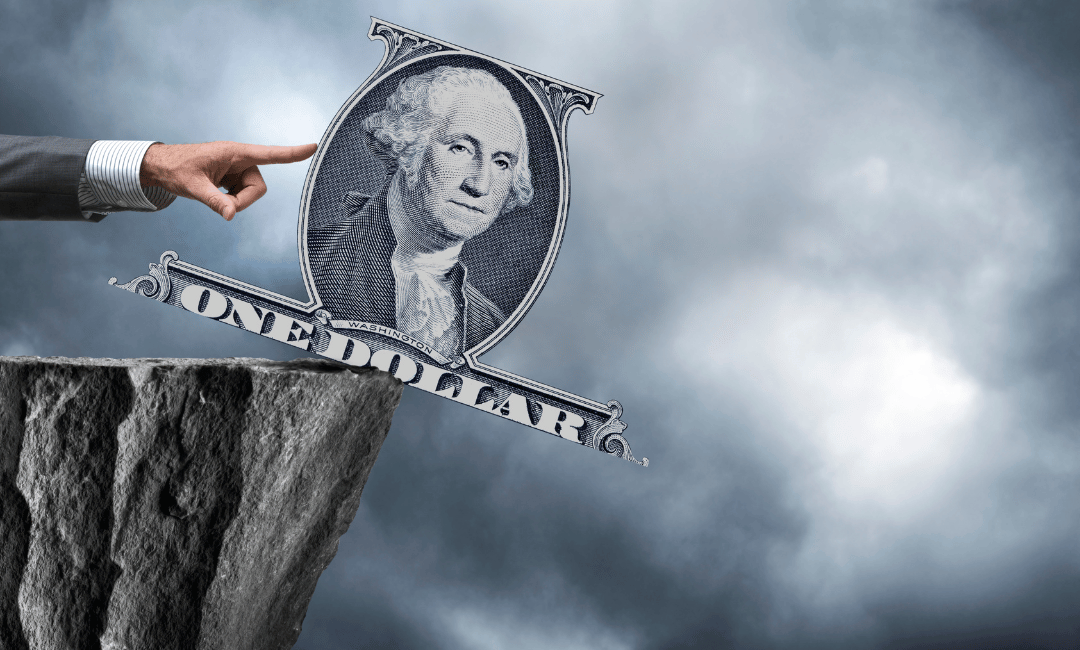There is an ongoing debate in the financial and economic sectors about how Central Bank Digital Currencies (CBDCs) may impact traditional assets such as gold and silver. As the world moves closer to a digital financial era, it is crucial to examine the nuances of CBDCs and their consequences for traditional stores of value. This article aims to clarify the key differences between precious metals and CBDCs, highlighting their distinct characteristics, purposes, and prospects in today’s economy.
Understanding CBDCs: A New Dawn of Digital Currency
Central Bank Digital Currencies (CBDCs) are virtual versions of a nation’s official currency that are issued and regulated by central banks. Unlike cryptocurrencies such as Bitcoin, CBDCs are centralized and supported by the government, which gives them the full trust and credit of the country. This inherent support makes CBDCs more stable than the volatile cryptocurrency market.
Governments are exploring the use of CBDCs to increase financial inclusion, streamline payment systems, and potentially reduce the cost of printing physical currency. CBDCs have the potential to revolutionize the way we save, invest, and transact through digital transactions.
The Allure of Gold and Silver: Time-Tested Precious Metals
Gold and silver have remained reliable mediums of exchange and stores of value throughout history. Their intrinsic value, rarity, and rich historical significance make them highly desirable. For centuries, gold has been considered the “ultimate currency” and a secure hedge against inflation and economic instability. Despite being less expensive than gold, silver has numerous industrial uses and comparable qualities.
During economic downturns, investors have flocked to precious metals because they view them as a haven that may be able to preserve wealth when more conventional markets fail. Because scarcity tends to increase a material’s value over time, the limited supply of gold and silver increases their allure.
CBDCs vs Gold and Silver
Tangibility, as well as inherent worth
Because of their unique physical characteristics, gold and silver have intrinsic value and are tangible assets that can be owned. Conversely, CBDCs are immaterial and get value from the public’s faith in the central bank that issues them. Although digital transactions with CBDCs are convenient, they might not be able to match the tactile value of precious metals.
Stability and Volatility
Cryptocurrencies have a reputation for being highly volatile, often experiencing sudden and drastic fluctuations in price. On the other hand, Central Bank Digital Currencies (CBDCs) are backed by central banks and are designed to be stable, with their value based on the country’s currency. While gold and silver prices can also fluctuate, they have historically been more stable than certain cryptocurrencies.
Value
Having maintained their purchasing power for centuries, gold and silver have a demonstrated track record as reliable investments. Since CBDCs are a relatively new idea, it is unclear if they will be able to maintain value over time.
Government support and legislation may inspire trust, but the precious metals’ long history of holding their value tells a powerful story.
Possible Combination: Precious Metals and CBDCs
Precious metals and CBDCs can work in harmony within a diversified portfolio, as opposed to seeing them as competitors. Instantaneous digital transactions are possible with CBDCs, making them a convenient medium for regular exchanges. On the other hand, as they have done historically, precious metals could act as a tactical hedge against economic volatility.

Advantages and Disadvantages of a U.S. Central Bank Digital Currency (CBDC)
The concept of a Central Bank Digital Currency (CBDC) has gained considerable attention in the ever-changing world of international finance. It is crucial to assess both the advantages and disadvantages of introducing a digital currency like CBDC in the United States financial system, economy, and for its citizens.
Advantages:
- Improved Transaction Efficiency: By eliminating the need for intermediaries, a US CBDC could streamline financial transactions and result in faster domestic and international transfers, benefiting individuals and companies alike.
- Inclusion of Finances: Through a digital dollar, financial services could be made available to underprivileged groups currently underserved by traditional banking systems. This inclusion may promote economic growth and lessen income inequality.
- Better Monetary Policy: The Federal Reserve would have a more direct tool for monetary policy if there were a U.S. CBDC. More precise adjustments to the central bank’s money supply and interest rates could improve economic stability.
- Countering Cryptocurrencies: A government-backed CBDC may lessen the risks of unregulated digital assets by providing a safe and regulated substitute for private cryptocurrencies.
Drawbacks:
- Privacy Concerns: Introducing a CBDC in the U.S. may give rise to privacy issues for users. Because CBDCs are centralized, government agencies may be forced to monitor financial transactions more closely.
- Technological Vulnerabilities: Cyberattacks and technical hiccups can affect digital systems. A CBDC must be constructed on a robust and secure infrastructure to reduce the risk of hacking and system failures.
- Disruption to Traditional Banking: The traditional banking industry may be affected by implementing a CBDC. Banks might have trouble attracting deposits if people keep their digital dollars directly with the central bank.
- Reliance on Technology: To conduct business, residents of a United States CBDC would need access to dependable internet and digital devices. This could widen the digital divide by excluding people who don’t have access to such resources.
- Run on Banks: People may believe that digital dollars are a safer investment than bank deposits during uncertain financial times. A “run on banks” situation could result from this, which might cause the financial system to become unstable.
Frequently Asked Questions (FAQs) About Central Bank Digital Currency (CBDC) and the Digital Dollar
It’s critical to address frequent concerns about these developments as the idea of Central Bank Digital Currency (CBDC) gains traction and conversations about the Digital Dollar continue to develop. We’ve compiled a list of commonly asked questions about CBDCs and their possible effects below to give you a thorough understanding of the subject.
A digital version of a nation’s official currency issued and controlled by the central bank is a Central Bank Digital Currency (CBDC). Unlike cryptocurrencies like Bitcoin, it is backed by the government and has legal tender status.
What distinguishes a CBDC from cryptocurrencies?
Although cryptocurrencies and CBDCs are both digital, CBDCs are subject to central bank regulation and have the same legal standing as hard currency. In contrast, cryptocurrencies are decentralized and unsupported by a single entity.
What precisely is the Digital Dollar?
The United States Dollar (USD) in digital form is known as the “Digital Dollar.” It seeks to combine the ease of use of paper money with the effectiveness and accessibility of online transactions.
What advantages come with adopting CBDC?
Adopting a CBDC has several benefits, such as increased financial inclusion, better transaction efficiency, better monetary policy implementation, and the ability to combat unregulated cryptocurrencies.
What impact might a Digital Dollar have on conventional banking?
Introducing the Digital Dollar may affect the traditional banking industry. People may choose to keep their digital currency directly with the central bank, which could affect banks’ capacity to draw in deposits.
What privacy issues are connected to CBDCs?
One primary concern with CBDCs is privacy. Because CBDCs are centralized, there may be more government surveillance of financial transactions, which could raise concerns about user privacy.
What approach to financial inclusion would a CBDC take?
People who are presently underbanked or unbanked may be able to access financial services thanks to CBDCs. Financial inclusion and the reduction of economic disparities could be facilitated by digital currency access.
What technological difficulties might the implementation of CBDC bring about?
Robust technology infrastructure is necessary for CBDCs to guarantee security and thwart cyberattacks. Large-scale infrastructure development would require substantial financial outlays as well as inventiveness.
Could a Digital Dollar completely replace paper money?
Although it’s possible, it’s unlikely that society will become completely cashless anytime soon. People could have the option to choose between digital and physical money by coexisting with physical dollars.
In what ways are other nations addressing CBDCs?
Diverse nations are investigating CBDCs in different manners. For instance, Sweden is experimenting with the E-Krona, China has created the Digital Yuan for testing, and the Bahamas has unveiled the Sand Dollar.
How do you see the Digital Dollar and CBDCs developing in the future?
There are future opportunities and difficulties for CBDCs and the Digital Dollar. Their future will be shaped by international cooperation and careful consideration of issues like infrastructure, security, and privacy.
How can I be informed about developments regarding CBDC?
Pay attention to official central bank announcements, financial news outlets, and reliable sources in the finance and technology sectors to stay current on CBDC developments and related news.




